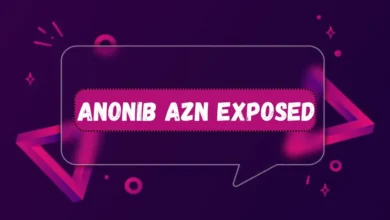Bunkralbum: The Mysterious Concept Everyone Is Talking About

What Exactly Is Bunkralbum?
Bunkralbum is one of those terms that immediately catches your attention because it sounds unique and slightly mysterious. While at first glance it might look like a typo or a random mash-up of letters, it has started to take on a life of its own in online communities. People use it as a name for collections of memories, albums of creativity, or even as a term for something that holds their most personal moments. In short, it represents a safe place for your ideas, photos, or experiences, bundled up in a way that feels completely your own.
Another way to think about it is that it’s a personalized archive. Think of it like an album, but not the typical photo album you keep on your phone. Instead, it’s an intentional space—whether digital or physical—where you store everything that matters to you. This concept can be applied to art, music, photography, or even writing. It’s the modern way of saying, “I have a corner of the world where my ideas are safe.”
The term has become popular because it encourages people to create rather than just consume. In an age where everything is moving so fast, bunkralbum feels like a gentle reminder to slow down, collect things that mean something to you, and put them somewhere safe, almost like a bunker for your creativity.
How People Use Bunkralbum in Their Daily Lives

For some, bunkralbum is just a fun term for a folder on their computer where they dump ideas. For others, it’s an entire digital art project. A lot of creators on social platforms now tag their work as #bunkralbum when they’re posting collections of related content, whether that’s sketches, poetry, or photography. It’s like saying, “This is a peek inside my bunker of creativity.”
There’s also a growing trend of using bunkralbum as a private journal. Instead of the usual diary with just words, people combine pictures, voice notes, video snippets, and music into one place. It becomes more of a multi-dimensional record of their life. This makes bunkralbum very personal—it’s something you can’t just copy from someone else.
Interestingly, some photographers and musicians have begun releasing their work under the label of a bunkralbum. It’s like a special edition, a curated set of pieces that belong together. The name itself adds a sense of exclusivity, like it’s something only a few people get to experience.
Why Bunkralbum Matters in a Digital World
We live in a time where everything is fast and disposable. We scroll past hundreds of images and videos every day, but very little of it stays with us. Bunkralbum flips that idea around. It forces you to think about what you actually want to keep. By intentionally choosing what goes into your bunkralbum, you create something meaningful out of the chaos.
In a way, this concept is also about mental wellness. Having a bunkralbum can be calming. It’s like having a private little museum where you can go back and revisit the things that make you happy. Whether that’s your travel photos, your favorite songs, or your own creative projects, having a single place for it all can reduce digital clutter and give you a sense of order.
Another reason why bunkralbum is becoming more popular is that people are looking for authenticity. Social media is great for sharing, but it’s also noisy. A bunkralbum is personal—it’s not for everyone to see. It’s for you. And that makes it special. It becomes a treasure chest that grows with you over time, evolving as your interests, experiences, and memories change.
How to Start Your Own Bunkralbum
Creating a bunkralbum doesn’t require expensive tools or fancy platforms. The beauty of it lies in how simple it can be. Start by picking a format that works for you. It could be a physical scrapbook, a private folder on your laptop, or a cloud-based space. The important thing is to make sure it’s a place you feel comfortable returning to whenever inspiration strikes.
Next, fill it with content that really means something to you. This could include your favorite photos, little pieces of writing, saved quotes, or even voice recordings of your thoughts. Don’t overthink it. The idea is to collect, not to curate everything perfectly. Over time, you’ll notice patterns in what you save, and that itself tells a story about you.
Finally, protect your bunkralbum. If it’s digital, back it up. If it’s physical, keep it safe. The whole purpose of a bunkralbum is that it’s a safe place—your bunker. Treat it like a personal archive. The more effort you put into it, the more rewarding it becomes as the years go by.
Conclusion
Bunkralbum is more than just a quirky word—it’s an idea. It’s about preserving what matters to you in a world that often feels too fast and too loud. Whether you’re an artist, a writer, or someone who simply wants a private place to store memories, a bunkralbum can become one of your most valuable personal tools. It’s your own little safe space, and it can be as simple or as elaborate as you want it to be.



